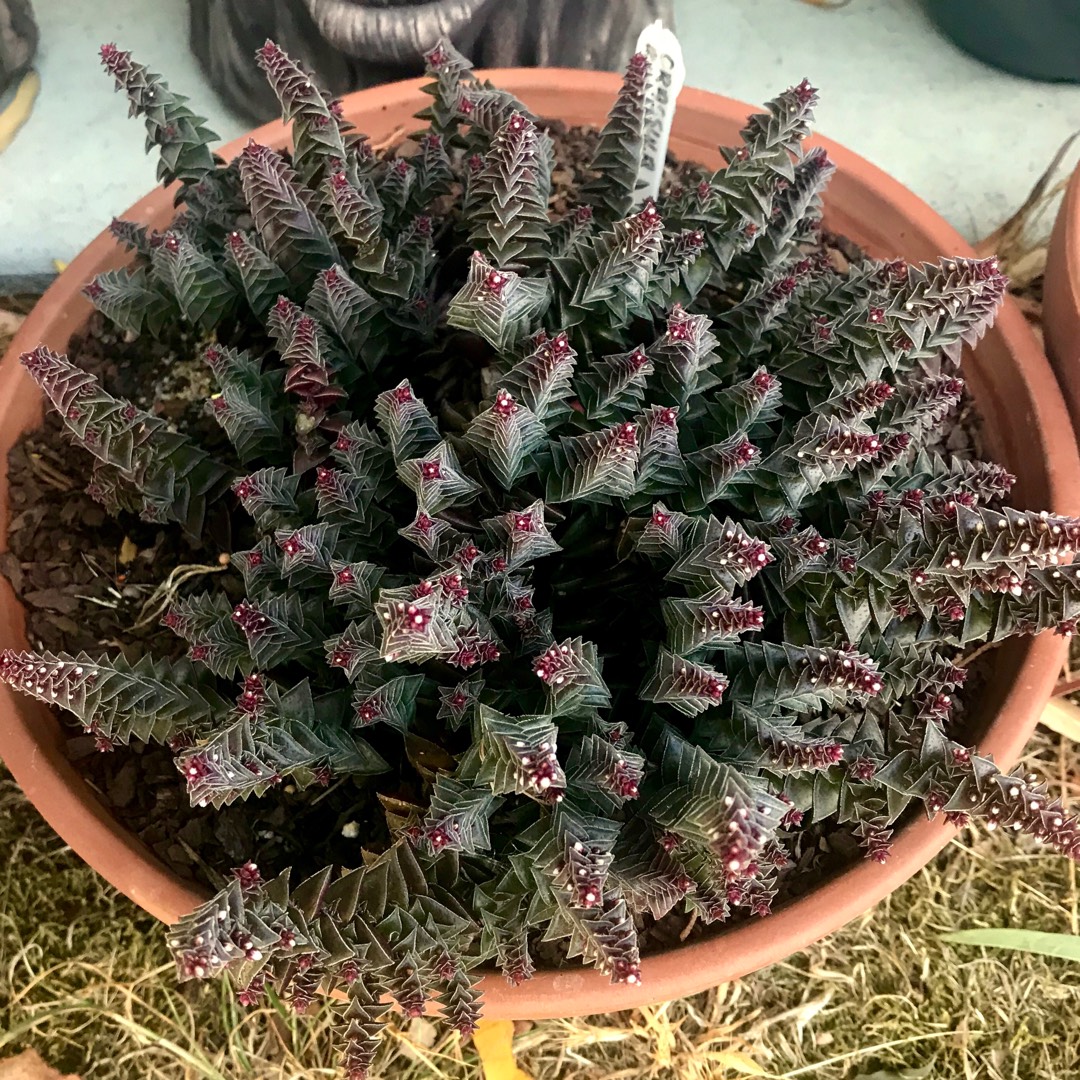
Crassula capitella subsp. thyrisflora 'Red Pagoda'
Red Pagoda
Crassula capitella subsp. thyrsiflora has pink tinged rosettes which later becomes pagoda shaped and turns red. It flowers at the ends of the 25 cm long stem. The tiny white flowers are up to 6 mm in diameter.
-
Full sun
-
Very little water
-
Not Frost hardy
-
Light and free draining
Common name
Red Pagoda
Latin name
Crassula capitella subsp. thyrisflora 'Red Pagoda'
type
Succulent
family
Crassulaceae
ph
5.0 - 7.5 Acid - Neutral
Plant & bloom calendar
-
Best time to plant
full grown dimensions
 0.40 M
0.25 M
0.40 M
0.25 M
Crassula capitella subsp. thyrisflora 'Red Pagoda'
Crassula capitella subsp. thyrsiflora has pink tinged rosettes which later becomes pagoda shaped and turns red. It flowers at the ends of the 25 cm long stem. The tiny white flowers are up to 6 mm in diameter.
Propagation by cuttings
From Early Spring TO Late Summer
Crassulas can be grown from leaf cuttings taken in spring and summer. Pull a leaf from the main stem, leave it to dry for a day, then place it on the surface of the growing compost. The leaf will form roots and eventually, a small rosette will appear at the base. Remove and pot up the new plant when well rooted.
Planting
From Early Spring TO Early Summer
Crassulas need a sharply drained soil, such as 2 parts John Innes potting compost number 2 and 1 part course sand or grit. They do best on a sunny window ledge and in winter, require a minimum temperature of 7C. Repot every second year in early spring.



























